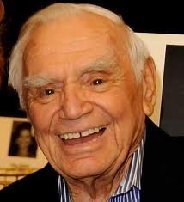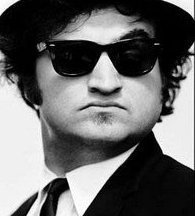9-1-1, usually written 911, is an emergency telephone number for the United States, Canada, Mexico, Panama, Palau, Argentina, Philippines, Jordan, as well as the North American Numbering Plan (NANP), one of eight N11 codes. Like other emergency numbers around the world, this number is intended for use in emergency circumstances only. Using it for any other purpose (such as making false or prank calls) is a crime in most jurisdictions.
In over 98% of locations in Argentina, Panama, Belize, Anguilla, Costa Rica, Ecuador, Jordan, Ethiopia, Liberia, Saudi Arabia, Philippines, Uruguay, United States, Palau, Mexico, Tonga and Canada, dialing "9-1-1" from any telephone will link the caller to an emergency dispatch office—called a Public Safety Answering Point (PSAP) by the telecommunications industry—which can send emergency responders to the caller's location in an emergency. In approximately 96 percent of the United States, the enhanced 9-1-1 system automatically pairs caller numbers with a physical address.
In the Philippines, the 9-1-1 emergency hotline has been available to the public since August 1, 2016, starting in Davao City. It is the first of its kind in the Asia-Pacific region. It replaces the previous emergency number 117 used outside Davao City.
As of 2017, a 9-1-1 system is in use in Mexico, where implementation in different states and municipalities is being conducted. Venezuela also has a 911 emergency services called VEN911. It has been in operation for approximately 10 years.
History
The first known use of a national emergency telephone number began in the United Kingdom in 1937–1938 using the number 999, which continues to this day. In the United States, the first 911 call was made in Haleyville, Alabama, in 1968 by Alabama Speaker of the House Rankin Fite and answered by U.S. Rep. Tom Bevill. In Canada, 911 service was adopted in 1972, and the first 911 call occurred after 1974 roll-out in London, Ontario.
In the United States, the push for the development of a nationwide American emergency telephone number came in 1957 when the National Association of Fire Chiefs recommended that a single number be used for reporting fires. The first city in North America to use a central emergency number was the Canadian city of Winnipeg, Manitoba in 1959, which instituted the change at the urging of Stephen Juba, mayor of Winnipeg at the time. Winnipeg initially used 999 as the emergency number, but switched numbers when 9-1-1 was proposed by the United States.
In 1964, an attack on a woman in New York City, Kitty Genovese, helped to greatly increase the urgency to create a central emergency number. The New York Times falsely reported that nobody had called the police in response to Genovese's cries for help. Some experts theorized that one source of reluctance to call police was due to the complexity of doing so; any calls to the police would go to a local precinct, and any response might depend on which individual sergeant or other ranking personnel might handle the call.
In 1967, the President's Commission on Law Enforcement and Administration of Justice recommended the creation of a single number that could be used nationwide for reporting emergencies. The Federal Communications Commission then met with AT&T in November 1967 in order to choose the number.
In 1968, the number was agreed upon. AT&T chose the number 9-1-1, which was simple, easy to remember, dialed easily (which, with the rotary dial phones in place at the time, 999 would not), and because of the middle 1, which indicated a special number (see also 4-1-1 and 6-1-1), worked well with the phone systems at the time. At the time, this announcement only affected the Bell System telephone companies; independent phone companies were not included in the emergency telephone plan. Alabama Telephone Company decided to implement it ahead of AT&T, choosing Haleyville, Alabama, as the location.
AT&T made its first implementation in Huntington, Indiana on March 1, 1968. However, the rollout of 9-1-1 service took many years. For example, although the City of Chicago, Illinois, had access to 9-1-1 service as early as 1976, the Illinois Commerce Commission did not authorize telephone service provider Illinois Bell to offer 9-1-1 to the Chicago suburbs until 1981. Implementation was not immediate even then; by 1984, only eight Chicago suburbs in Cook County had 9-1-1 service. As late as 1989, at least 28 Chicago suburbs still lacked 9-1-1 service; some of those towns had previously elected to decline 9-1-1 service due to costs and—according to emergency response personnel—failure to recognize the benefits of the 9-1-1 system.
Regarding national U.S. coverage, by 1979, 26% of the U.S. population could dial the number. This increased to 50% by 1987 and 93% by 2000. As of March 2022, 98.9% of the U.S. population has access.
Conversion to 9-1-1 in Canada began in 1972, and as of 2018 virtually all areas (except for some rural areas, such as Nunavut) are using 9-1-1. As of 2008, each year Canadians make twelve million calls to 9-1-1. On November 4, 2019, the Northwest Territories launched the 9-1-1 service across the territory with the ability to receive service in the territory's 11 Official languages.
On September 15, 2010, AT&T announced that the State of Tennessee had approved a service to support a Text-to-9-1-1 trial statewide, where AT&T would be able to allow its users to send text messages to 9-1-1 PSAPs.
Most British Overseas Territories in the Caribbean use the North American Numbering Plan; Anguilla, Bermuda, the British Virgin Islands, and the Cayman Islands use 9-1-1.
Mexico switched its emergency phone number from 066 to 9-1-1 in 2016 and 2017.
- 3 tablespoons butter
- 8 ounces fresh mushrooms, sliced
- 1 (10-3/4-ounce) can cream of chicken soup
- 1/2 cup milk
- 1/2 teaspoon salt
- 1/4 teaspoon black pepper
- 2 cups chunked cooked chicken (about 2 boneless, skinless chicken breasts)
- 1 cup frozen green peas, thawed
- 1 (2-ounce) jar diced pimientos, drained
- In a large skillet over medium heat, melt butter; saute mushrooms 4 to 5 minutes, or until tender. Add soup, milk, salt, pepper, and chicken; mix well and cook 3 to 4 minutes, or until hot.
- Stir in peas and pimientos and continue cooking 5 to 7 minutes, or until warmed through.
***Serve over warm cooked egg noodles or buttermilk biscuits. Wanna make your own biscuits? Try our easy recipe!



















